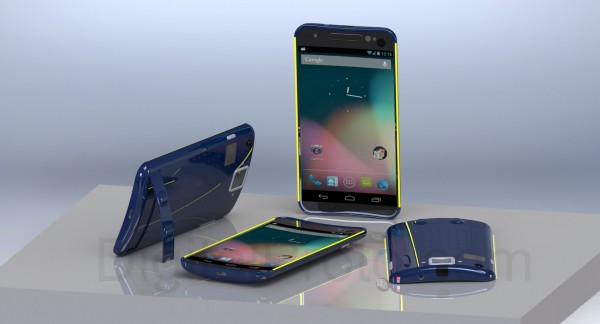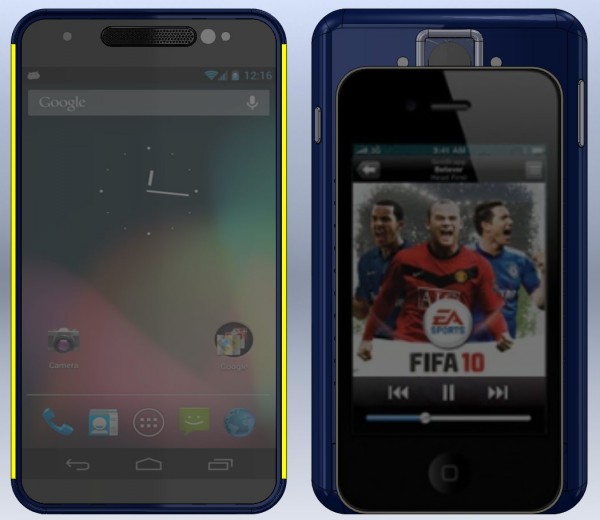
What you're looking at is the Nexus D, a concept design created by patent-holding mechanical engineer and BetaNews reader Dorian Lust.
Lust is a Galaxy Nexus user and fan, and instead of idly talking about the features he'd want in the next version of the Galaxy Nexus, he designed it for himself...while watching the Olympics on television.
This update on the Galaxy Nexus design has one standout feature which would instantly make this an eye-catching phone in real life: the "light pipes" down either side of the chassis. These colored LEDs would be used for calling/messaging notifications, or as vanity lights for the forward-facing camera to illuminate the user. Other added features include a fingerprint scanner and IR blaster for universal remote functionality.
The back of the chassis is soft to the touch, and the entire body, including the screen, is curved to rest in the palm. For those times when it's not in the user's hand, it's got a kickstand.
Though the Nexus D is unique, and quite different from Apple's iPhone, we threw Lust a curveball when he first showed us the design by telling him it looked "kind of like an iPhone."
"Now I know how the Samsung designers felt!" Lust replied, somewhat stunned by the critique. "The only thing I looked at was my Galaxy Nexus, just as a reference of size."
But the comment started the wheels turning in the designer's head, and he conceded that there were a couple of similarities.
"The straight-on view of the outer profile is very similar, especially when they're not side by side for a size comparison, but this is a very 2D perspective," Lust said. "As an engineer I'm always seeing things in 3D, but I suppose many people do not think like that…Especially lawyers who are looking at sheet of paper with some 2D patent figures that have been dumbed down as much as possible."
Lust continued by pointing out the only concrete, measurable similarity between his design and the iPhone was the height-to-width ratio, which is actually quite similar between the real-life Galaxy Nexus and the iPhone. On the Galaxy Nexus, the ratio is 1.8 : 1, on the iPhone, it's 1.95 : 1.

"I think an eight percent difference is enough," Lust said. "But if [Apple] is going to sue Samsung they should sue every manufacturer on the market. Prior art negates any claims outside of a very narrow margin and they would have to back it up."
The designer's point is that the rectangular footprint is emblematic of this entire generation of portable devices, and the width-to-height ratio is very similar across the board: with notable exceptions being the Samsung Galaxy Note, and several of Motorola's 2010 Android devices like the Flipout, which opted for more square shapes.
But besides the general rectangular shape, this concept can stand quite strongly on its own. Lust even believes he can successfully incorporate some highly unusual features into his design. A laser pointer for example. When the device is remotely connected to a PC, or broadcasting a presentation via WiDi, the phone itself can be used to advance slides AND as a pointing device. Lust is also toying with the idea of designing a smartphone with built-in radar detection so when the device is in navigation mode, it can detect and geolocate speed traps.
We think Lust is onto something, and we fully support this type of creative thinking. What do you think?

